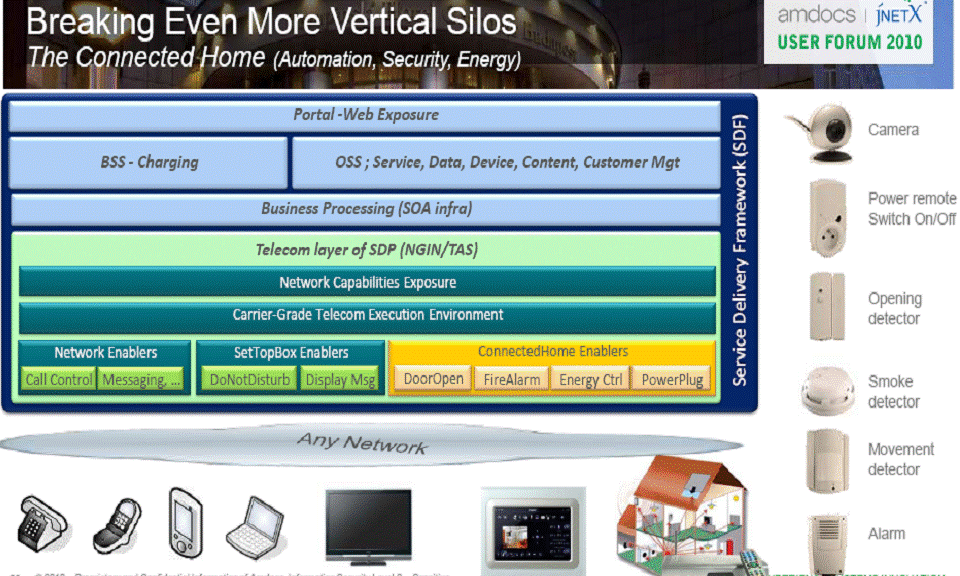I’ve been a long time proponent on the importance of APIs (Application Program Interfaces) to operators’ evolving business models, in fact, of APIs for any web based business model as discussed in this API Management Whitepaper. However, time is moving on and operators continue to struggle with implementing the basics given their business model (charge before the customer even knows they want / need the service, not sharing the love with developers) and lack of board level commitment (most developer communities and API initiatives remain window dressing for investment analysts not a strategic objective). As evidence on the latter point just look at the relative size of investments in LTE and APIs, they’re different by orders of magnitude.
Operators have been working at developer communities for nearly a decade with little success beyond a few strategic partners. Given the success of Apple and Android, we’re seeing renewed operator effort in developer communities, e.g. WAC (Wholesale Application Community). Yet the mistakes of the past continue to be made. I’ve discussed developer needs and the core advantage operators have in engaging developers, but operators remain focused on nickel and diming their customers and developers in the face of a clearly winning model from a customer engagement perspective.
We’re now in 2010 and Apple and Android have fundamentally changed the world’s perception of where the value resides. People pay for expensive devices and the apps / services / VAS (Value Added Services) are free. Its just like the web, you pay for the laptop and then all the cool stuff of the web is available for ‘free.’ We had our chance and blew it because of the telcos’ business model and a lack of board level commitment – I apologize for the repetition.
The technology behind the app stores created by Apple, Android, RIM, etc. has been available to operators for most of this decade: ODPs (On Device Portals), device management, content ingestion, location, presence, charging, trial to buy, ad support, etc. Device fragmentation was and remains an issue, but it was compounded by the silly notion that the ODP had to work across all of the operators devices.
Operators continue to make good business out of selling content (games, ring-tones, movies, wallpapers, etc.) especially in developing nations, its a $70B business. So the OTT (Over The Top) app stores of Apple and Android have some commercial catching up to do, but that’s really not their focus, rather its about delivering customer value so more devices are sold or OS (Operating System) users gained to spy on. The death knell has sounded as Apple/Android have won the customer engagement battle.
So where does this leave operators? Cricket (mPortal) and Bharti Airtel (Cibenix) provide good examples of what to do in developed and developing markets: APIs are important but forget about per dip charges; an operators’ developer community is no longer relevant rather focus on ingestion and partnering; and its all about the customer experience, i.e. making it easy for customers to do stuff. These examples are showing ARPU increases in the multiple 10%s, as discussed in the original API ARPU uplift analysis.
On the enterprise side we have CEBP (Communication Enabled Business Processes) as discussed in this whitepaper, and there’s the M2M (Machine to Machine) opportunity: security, mHealth, connected car, connected home, etc. This is where Amdocs jNetx impressed me with their vision of how their SDP enables an operator to play a role in the internet of things, see diagram below. And yes, both Apple and Google have a clear plan on how they will move into that space. Hence, operators need to get their act together and really commit to service innovation, get board level commitment, and execute before the web service providers run rings around them yet again.

Alan,
I agree that the US/EU Telcos have completely missed the opportunity to leverage their apis/assets in the consumer market. Telcos in other markets may still have an opportunity with marketing/mobile money applications.
However, it is clear to me the enterprise class CEBP market opportunity is still available. The market is continuing to grow. Can Telcos take advantage of that opportunity? Technically they are ready but culturally I have my doubts.
Here is the job description that I would need to see through out a major Telco to prove to me they are ready to achieve billion dollar wins. A Telco exec. would be responsible for understanding a set of major clients’ business processes. The exec. would then be responsible for finding new applications that leverage the Telco assets/apis and bringing those solutions deep into the client’s business process to help create competitive advantages for their client. The core business model is getting paid to move business metrics.
At this point, I think the major BPOs including Cisco, IBM, HP etc. are better suited to that style of client engagement. The Telcos are technically in a better position but culturally may not be able to change in time.
Keep up the great work
Absolutely agree, as referenced in the article to your CEBP whitepaper. I frequently use Telus as an example of success in the application of APIs to SMB (Small Medium Business.)
Alan, fantastic blog post. Really resonates with TM Forum staff thinking and its Enabling New Services initiative direction. ODPs represent a strong form of a CSP distribution business model, especially for mobile. There are others for apps and content on the web, TV, and cloud (B2B SaaS) too.
I blogged about your blog today.
Stephen Fleece
TM Forum
Thx Stephen 🙂
I added a comment regarding this thread onto Stephen Fleece’s blog post on related matter.
Tal
Thx Tal 🙂